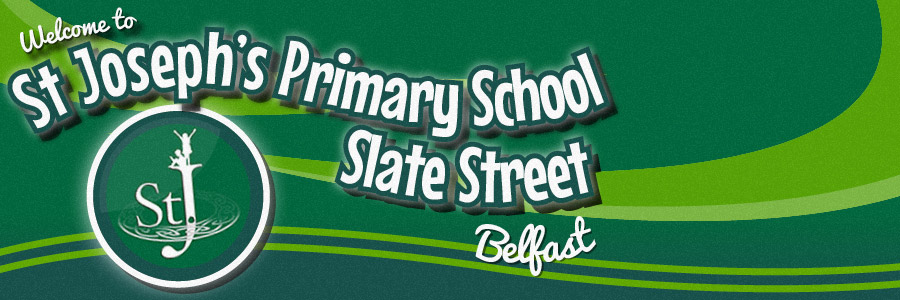New wall displays for the new term
Wall displays are an important part of St. Joseph's PS , as they make our classrooms and hallways more inviting, creating an enhanced learning environment for all. Our children and staff work very hard to ensure that we maximise the use of all areas in and around our school. We change our displays regularly to compliment teaching sessions. Displays are much more than lovely pictures.....
– Displays can be decorative. They can make the classroom brighter, and a more interesting and stimulating place. This, in itself, can have a direct impact on pupil motivation and thus on pupil learning.
– Displays can be used to “set the scene” for a new teaching topic. The teacher can put some stimulating material on display to promote pupil interest in a topic that is going to be taught. If the theme was “volcanoes”, some interesting pictures and diagrams about volcanoes might be displayed before the teaching begins: perhaps even several days before, not just immediately before the lesson.
– Displays can be used to stimulate and create pupil interest. Books might be displayed on a shelf, and opened at an interesting page, to encourage pupils to read. A “nature table” is another example of a display to create interest.
– Display materials can include supplementary teaching aids that simply enrich or reinforce what is being taught, helping to bring the subject “to life”. If a foreign country was being studied as part of “geography”, a display might include pictures of the people and their costumes, famous landmarks, and so on.
– Displays can be used to communicate to others what the class is doing. This can include other students from a different class, other teachers, the principal, official school visitors, parents, and members of the local community.
– Displays can take the form of useful reference material, to support pupil learning, such as letters of the alphabet and “number lines”.
– Display material can include information that it is important for students to memorise, such as number tables, spellings and other important factual information. The display material can be used for “drills”. Students will also tend to learn the material, simply because it is displayed and there to look at.
– Displays can form the central basis of a piece of class work or a topic. They can be a means of reporting on, and recording, the work that has been undertaken. For example, the title of a display might be “What we did in Science”,
– Displays can be part of some on-going work. For example, if metamorphosis is being studied, a display might include an aquarium with tadpoles. The growth of tadpoles can be monitored and recorded on graphs that form part of the display.
– Displays can be used to provide students with something extra to do, in spare moments. A “puzzle of the day” would serve this purpose well. Few students will be able to resist trying to solve it!
– Displays can be used to promote class management. They can include lists of routines, responsibilities, tasks, and rules. They can include directions, labels, and instructions.
– Displays can form part of record keeping. They can be used to record pupil and class progress, and topics covered. They might also record student awards.
St Josephs Primary School, 1a Slate St, Cullingtree Road, Belfast BT12 4LD Phone: 028 9032 3683
 Menu
Menu
